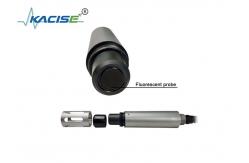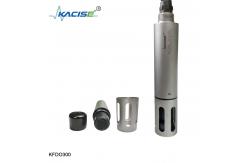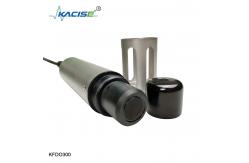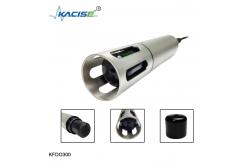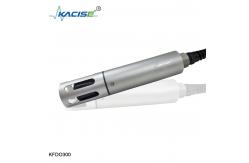Immersion Dissolved Oxygen Sensor Fluorescence quenching
|
KFDO300 Online Fluorescence Dissolved Oxygen Sensor Water Quality Sensor
Integrated design, anti-electromagnetic interference Built-in temperature sensor, real-time temperature compensation Support salinity and air pressure compensation Stainless steel case, IP68 waterproof grade, suitable for various working conditions RS485 signal output, Standard Modbus protocol, easy integration, networking Technical Specifications
General Knowledge of Dissolved Oxygen
Tips:Measuring Dissolved Oxygen by the Titrimetric MethodThe titrimetric method for dissolved oxygen analysis is known as the Winkler method. This method was developed by L.W. Winkler, a Hungarian chemist, in 1888. Also known as the iodometric method, the Winkler method is a titrimetric procedure based on the oxidizing property of dissolved oxygen. This method has long been the standard for accuracy and precision when measuring dissolved oxygen. Winkler MethodSamples are collected, fixed, and titrated, either in the field or in a lab. The sample should be fixed with the reagents as soon as possible to prevent oxygen levels from shifting due to agitation or atmospheric contact. The Winkler method requires a specific bottle, known as a BOD bottle, which is designed to seal without trapping air inside. Today, the reagents required can come in pre-measured packets for greater accuracy and ease of use. When using this method, the amount of titrant needed to complete the reaction is proportional to the dissolved oxygen concentration of the sample. While the Winkler method is still a recognized standard for analyzing dissolved oxygen, several concerns have been identified. This method is subject to human error, inaccuracies, sample contaminants and interferences. In addition, titrations can be time-consuming, and cumbersome in the field. Modified Winkler Methods
Now seven modified Winkler methods exist, each created to respond to a different issue (such as an interfering contaminant). The most popular of these is the Azide-Winkler method, as it addresses the issues with iodine present in the original method. However, the rest of the modified methods create a new concern – these methods require prior knowledge of the sample (such as other elements present) in order to make the appropriate choice of method.
If one has the time and the inclination, the titrimetric method for dissolved oxygen analysis can be accurate and precise. However, new technologies have created dissolved oxygen sensors that are easier and quicker to use and can be just as accurate in most applications.
Contact InformationPhone +86-17719566736 Email sales@kacise.com Location Tangyan South Road, High-tech Zone, Xi'an City, Shaanxi Province, China
|
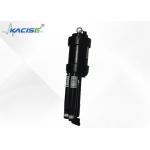
|
KWS-850 On-line Multi-parameter Water Sensor High Accuracy Turbidity Measurement For Wastewater Treatment Plants |
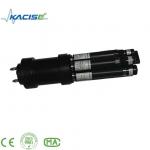
|
Power Consumption 5W 12V KWS-850 Multi-Parameter Water Quality Sensor For Water Monitoring |
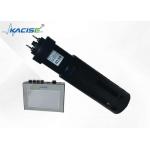
|
Low Maintenance Of The KWS-850 On-line Multi-parameter Water Quality Sensor |
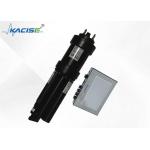
|
Precision KWS-850 On-line Water Turbidity Sensor Water Quality Sensor For Aquaculture |
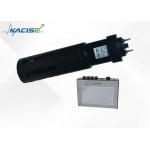
|
The KWS-850 On-line Multi-parameter Water Quality Sensor Can Measure 8 Parameters Simultaneously |
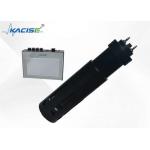
|
The Integrated KWS-850 On-line Multi-parameter Self-cleaning Digital Digital Sensor |

